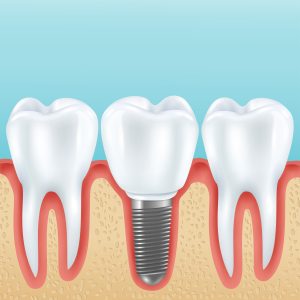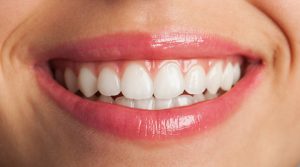Invisalign is a popular and effective way to straighten teeth without traditional metal braces. However, sometimes, you might find that your teeth aligners are not tracking properly. This means your teeth aren’t moving as planned according to your treatment schedule. If you’re experiencing this issue, don’t worry. This article explains what you can do if the aligners are not tracking properly.
Table of Contents
What Are Invisalign Teeth Aligners?
Invisalign is a transparent aligner used in orthodontic treatment. It substitutes metallic or conventional braces made from flexible thermoplastic material. These transparent teeth aligners aim to ensure proper tooth alignment without hassle and avoid the heavy look that comes with braces and wires.
How Do Teeth Aligners Help In Straightening The Teeth?
Invisalign are plastic trays that come in sets of various trays, customized according to the patient’s dentition after the 3D scan is done. Each aligner is recommended to be worn for 22 hours every day for one week. These aligners pressure teeth to move a fraction of millimeters with each aligner.
Care must be taken to remove the aligners while eating and brushing or flossing the teeth. Each treatment is different from one indivisible to another; hence, the overall time to align the teeth varies from person to person. The clear aligner is helpful for closing the space between the teeth and detaching overcrowded teeth, overbite, and crossbite.
What Are The Contraindications Of Teeth Aligners?
Not everyone is a candidate for the clear aligners. While clear aligners are aesthetic ways of correcting uneven or positioned teeth, they are not for everyone.
These aligners best work for mild to moderate corrections. The cases where the involvement of bony corrections of jaws are needed, the protrusion or retrusion jaw can’t be corrected with aligners. Furthermore, the aligners are used in conjugation with traditional orthodontic bands in severely malpositioned teeth and severe crowding of teeth.
The proper way to look at whether someone is the right candidate for clear aligners a detailed and thorough discussion about the condition and the treatment plan with the orthodontist should be done so that an informed decision is made.
What Is Meant By Tracking In Invisalign?
After the aligners are put over the dentition, the dentist monitors them to ensure that clear aligners fit properly and move as planned during treatment planning. This phenomenon is called aligner tracking. Proper tracking means that aligners are well seated on the teeth and guided effectively to the desired positions.
Sign Of Poor Tracking of Aligners – How to Fix it?
The indications of poor alignment tracking are that no or very little movement is seen after wearing the aligners. Also, a visible air gap in the aligners suggests loosely snug aligners, resulting in no alignment tracking.
After your orthodontic is aware that the aligners are not tracking properly he may recommend following instructions that include :
- Chewing: Patients are advised to use smaller cylindrical rubbery devices called chewers. These devices help in the proper seating of the aligners. Biting on them can help eliminate the aligner air gaps.
- Extended Wear Time: If gaps persist, the orthodontic specialist may suggest increasing the number of hours the aligners are worn. This is done to improve the movements and catch up with the planned movement in the treatment plan.
- Backtracking: This is a procedure where an individual is asked to hold a prior pair of aligners for some time. This is done to settle any discrepancy in the previous aligners so that the new set tracks properly.
- Refinement Trays: If gaps continue, the doctor might create a new set of aligners called Refinement trays to better fit the current alignments of teeth and then guide these to desired positions.
- Checking Attachments: Sometimes, the attachments are not in place, causing poor tracking. Ensuring the attachments are in place and bonded to teeth properly helps reduce the aligner air gaps.
- Proper Insertion And Removal: Patients should follow instructions while removing and inserting the aligner with good aftercare for these aligners to get better tracking.
What Are The Causes Of Poor Aligner Tracking?
The contributing factors to poor tracking are:
- Wearing the aligners for an inadequate time of less than 22 hours.
- Improper insertions and removal of the aligners or poor handling can result in discrepancies, causing poor tracking.
- Jumping ahead to the next set of aligners before time, thinking that it will result in quick movements, results in poor tracking.
- Any issue with the attachment or the bonding can lead to poor tracking.
- When aligners are loosely snug and not seated properly, they result in improper tracking of aligners.
- In the case of complex movements, the aligners don’t get much success in making movements. In these cases, there is no tracking of aligners
Conclusion
Clear teeth aligners or Invisalign are good substitutes for braces but require thoughtful treatment planning. While they are hassle-free compared to traditional braces, it must be understood that not everyone is a candidate. The aftercare and instructions must be religiously followed so that the aligners track on time and deliver good results.
If you are looking for a professional to guide you for Invisalign tracking, Anoka Dental has the best dental experts who strive to provide the best possible dental care to individuals and families.
Take Control of Your Invisalign Journey Today!
For personalized advice and solutions, schedule an appointment with our experienced team.
Achieve the smile you’ve always wanted – start your Invisalign journey today!
Visit our clinic Here!




